Exhibitions by Organisations and Museums throughout the UK celebrating the legacy of William Smith's work.
Geological Society's Library Exhibition: William 'Strata' Smith (1769 - 1839), Father of English Geology
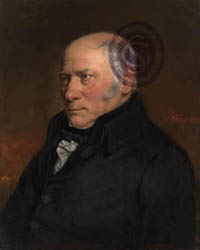
In August 1815, William Smith (1769-1839) published what is acknowledged as the first geological map of a country ever produced, ‘A Delineation of the Strata of England and Wales, with part of Scotland; exhibiting the collieries and mines, the marshes and fen lands originally overflowed by the sea, and the varieties of soil according to the variations in the substrata, illustrated by the most descriptive names'. Although there were ‘geological’ maps in existence before this, these invariably only identified rocks by types and are therefore more accurately described as ‘mineralogical’ maps. Smith’s innovation was to attempt to classify rocks according to age and manner of deposition – that is stratigraphically.
Bringing together the Society's rare and unique William Smith items, this exhibition is a celebration of his achievements in the field of geology which laid the basis of the science we know today – and led to him rightfully being known as ‘The Father of English Geology’.
The story of the rocks: William 'Strata' Smith's geological map at the Yorkshire Museum
Date: 22 May - 30 November 2015
Venue: The Yorkshire Museum, York
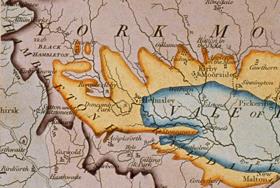 The Yorkshire Museum holds a copy of William Smith’s (1769 - 1839) famous map of the geology of England and Wales. This was published in 1815, and pioneered the use of fossils to identify and trace layers of rock across large distances – a technique still used today. Smith has been known as ‘Strata’ ever since. He was the uncle of the Yorkshire Museum’s first keeper, John Phillips (1800-1874), and the map was registered in the collections in 1824. By this time Smith was living in Scarborough, and he and Phillips gave a series of lectures in the region, illustrated using this map.
The Yorkshire Museum holds a copy of William Smith’s (1769 - 1839) famous map of the geology of England and Wales. This was published in 1815, and pioneered the use of fossils to identify and trace layers of rock across large distances – a technique still used today. Smith has been known as ‘Strata’ ever since. He was the uncle of the Yorkshire Museum’s first keeper, John Phillips (1800-1874), and the map was registered in the collections in 1824. By this time Smith was living in Scarborough, and he and Phillips gave a series of lectures in the region, illustrated using this map.
The Museum will be joining the nationwide bicentenary celebrations by conserving and displaying this map alongside its Yorkshire story for the first time.
The map display and exhibition was launched on 22 May and will be available to the public until 30 November. There is a rollerblind covering the William Smith map to protect it from light damage which is raised between 11.30 - 12.30 and 2.30 - 3.30 each day. The map is reproduced on the outside of the blind.
The Man who put Scarborough on the Map
Dates: 28 July 2015 - 31 December 2015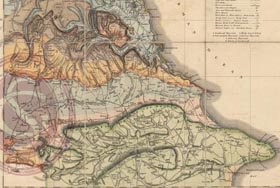
Venue: Rotunda Museum, Scarborough Museums Trust, Scarborough
An exhibition about William Smith in Scarborough. William Smith was an English geologist who designed the very first geological map of Britain. Published in 1815, the map was the result of years of work and changed the way we look at the world - even today.
To celebrate the publication of the 'map that changed the world' there will be an exhibition on the first floor of the Rotunda Museum, summer activities by local theatre company, Animated Objects (see diary for dates) and a newly commissioned short animation about William Smith and his life.
Reading the Rocks: The Remarkable Maps of William Smith
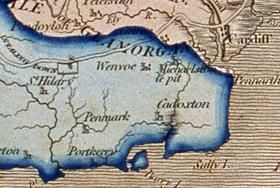 Dates:
Dates: 26 September 2015 - 28 February 2016
Venue: National Museum Wales, Cardiff
Autumn 2015 sees a new exhibition based on the geological maps of geologist William Smith (1769 – 1839). Largely unknown by the general public, the canal surveyor William Smith of a humble background created the first geological map of a nation. His maps were ground-breaking, revolutionising our understanding of geology, geological time and the science of stratigraphy. This dramatic and colourful exhibition of his large maps marks the 200th anniversary since the publication of the first map.
Handwritten in Stone: the life and legacy of William Smith
Dates: 9 October 2015 - 31 January 2016
Venue: Oxford University Museum of Natural History
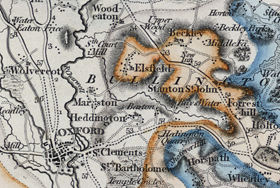
William Smith, the ‘father of English geology’, was the first and only man to map the geology of England and Wales single-handed. Publishing his great map in 1815, 2015 marks the bicentenary of this important moment in the history of science.
Handwritten in Stone examines the man behind the remarkable feat, exploring Smith’s personal and professional life, the influences of the social, political and scientific world of his time, and the legacy of his geological work and discoveries. Housing the most extensive collection of Smith’s papers in the world, the Museum will be exhibiting newly catalogued material, most of which have never been on public display before and offer a unique perspective on the man behind the map.
Sedgwick Museum: William Smith Map Exhibition
Dates: Opened August 2015
Venue: Sedgwick Museum of Earth Sciences, Cambridge

The Sedgwick Museum holds a unique historic collection of geological maps, including three copies of William Smith's 1815 'Delineation of the strata of England and Wales etc'.
Some of these maps will displayed as part of a special exhibit to celebrate the bicentenary of the 1815 publication Smith's famous map. One of the Smith maps is being conserved and will remain on permanent display in the Sedgwick Museum. The exhibit outlines the 19th century history of geological mapping in the British Isles and especially those areas studied by Cambridge geologists from Adam Sedgwick to a recent graduate.
Commemorative Exhibition on William Smith's Life and Work
Date: March 2015 - September 2015
Venue: Churchill and Sarsden Heritage Centre, Oxfordshire
 This year is the bicentenary of this famous geological map and the Churchill & Sarsden Heritage Centre, in partnership with the Oxford University Museum of Natural History, will display a commemorative exhibition about William Smith's life and work.
The exhibition will incorporate Smith's diaries and letters together with audio recordings giving the background to the story of the famous map. The recordings will also explain how the William Smith collection came to be archived in the museum in Oxford.
This is a significant partnership and we are delighted to be celebrating the heritage of the villages of Churchill and Sarsden with this important focus on William Smith in 2015.
This year is the bicentenary of this famous geological map and the Churchill & Sarsden Heritage Centre, in partnership with the Oxford University Museum of Natural History, will display a commemorative exhibition about William Smith's life and work.
The exhibition will incorporate Smith's diaries and letters together with audio recordings giving the background to the story of the famous map. The recordings will also explain how the William Smith collection came to be archived in the museum in Oxford.
This is a significant partnership and we are delighted to be celebrating the heritage of the villages of Churchill and Sarsden with this important focus on William Smith in 2015.
A free exhibition; more details will be available soon
William Smith: Colours Beneath your Feet
Date: 23 May - 19 September 2015
Venue: Dudley Museum and Art Gallery
 An exhibition exploring the life of William Smith and the making of his 1815 geological map. The centerpiece of this exhibition is a very rare canvas mounted travelling copy of the map (series b, 22) in pristine condition which will be on public display for the first time.
An exhibition exploring the life of William Smith and the making of his 1815 geological map. The centerpiece of this exhibition is a very rare canvas mounted travelling copy of the map (series b, 22) in pristine condition which will be on public display for the first time.
Designed as a travelling exhibition the map will be available for future loan.
Mapping a Nation: Uncover the story of William Smith and Britain's first geological map
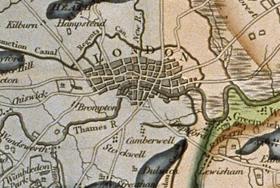 Dates: 17 September to 31 October 2015
Dates: 17 September to 31 October 2015
Venue: The Natural History Museum, London
See how William Smith created Britain's first geological map in the Mapping a Nation exhibition.
The display celebrates the bicentenary of the first publication of Smith's map in 1815, and tells the story of the man who mapped Britain.
Found in the Images of Nature gallery, you can see four panels from one of the first editions of Smith's geological map, as well as the unique fossil collection he used to create this.
Visualising Landscapes & Geology, Past, Present & Future
Date: October 2015
Venue: University of Bristol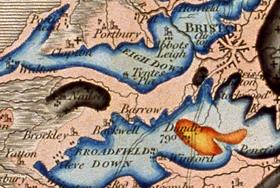
The School of Earth Sciences, University of Bristol, is planning a series of events to celebrate the bicentenary of the publication of William Smith's map. Commemorations will explore the wider context of geological maps, from scientific and cultural representations of landscapes to modern geological mapping of other planets.
Events will include an exhibition, commissioned artworks on Smith’s map, and a series of high profile public lectures beginning 7 October with a lecture by Geologist and BBC Presenter, Professor Iain Stewart.